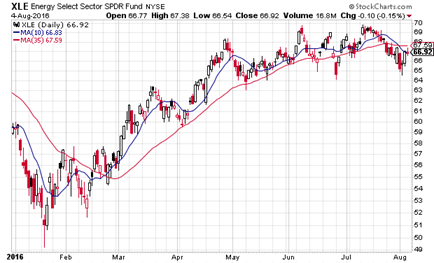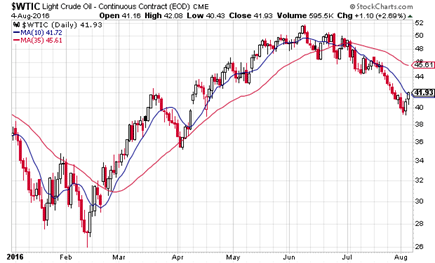
At last. Finally. Some good news about the future! The UK will have more charging stations for electric vehicles than petrol stations by 2020, according to Nissan. Yes, the company is probably talking its own book. But it’s probably right. Electric vehicles have reached a “tipping point.”
Mind you, electricity still has to come from somewhere. You can get it from solar. Or wind. Or waves. Or coal. Or oil. Or gas. It doesn’t come from nothing. But with Mercedes-Benz launching two sports utility vehicles and two sedans to compete with Tesla and BMW, it’s a timely reminder. Government tends to stand still and fight the last war. In the real economy, entrepreneurs and visionaries are thinking about the next opportunity.
Could electric replace oil? Now that is an interesting debate.
Oil isn’t dead yet
In my Ahab-like focus on the future of money and interest rates, I’ve taken my eye off the oil market. It’s getting interesting again, from a technical perspective. Fundamentally, the Texans and the Saudis are in a Mexican standoff. What do I mean?
The Texans – and I’m using that term to mean the entire fracking/shale-oil industry – have become experts in turning off and on their surplus production capacity to meet fluctuations in demand. It used to be the Saudis that were the “swing” suppliers. And that’s why pricing power in the oil market always resided with producers.
Competition from shale and solar has put the Saudis under the pump (as the Aussies say). And the oil price has suffered. Brent crude fell by more than 20% from its June highs before it began to rally Wednesday and Thursday. It’s up 6% on those two days and back over. And check out the charts below.


The top chart is the S&P Energy Select Sector SPDR Fund (XLE). The bottom chart is the continuous contract for West Texas Intermediate crude (WTIC). Both are year-to-date charts. And both include ten-day moving averages and 35-day moving averages. What do they show you?
Well, charting can be a little augury. You rip out the entrails of a bird and try and divine the future. But the short-term moving averages, at least, do make sense to me. If the ten-day crosses the 35-day, you have a bit of momentum.
In both cases, you can see the positive momentum began in late February – about when Charlie Morris went long on energy in The Fleet Street Letter – and turned bearish (the ten-day crossing under the 35-day) in late June. Also in both cases, the trading action from the past two days puts XLE and WTIC smack-dab on their short-term moving averages.
First, they have to cross it. Then, the ten-day has to cross the 35-day. If that happens, you have some momentum in oil. Of course if it happens, the momentum will be well under way already.
As you can see, market timing is not my strength. But reinforcements are on the way.
Category: Economics

